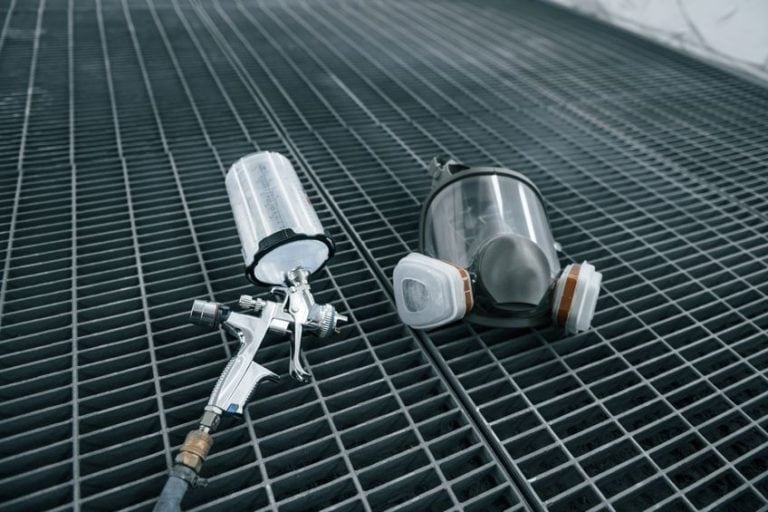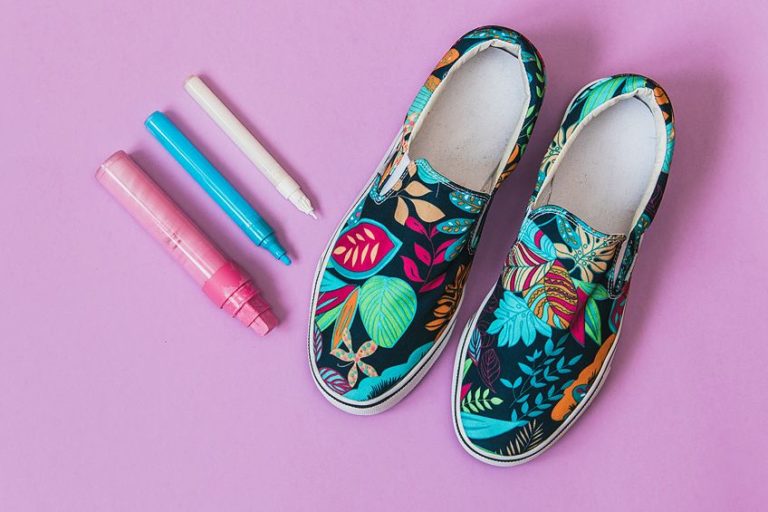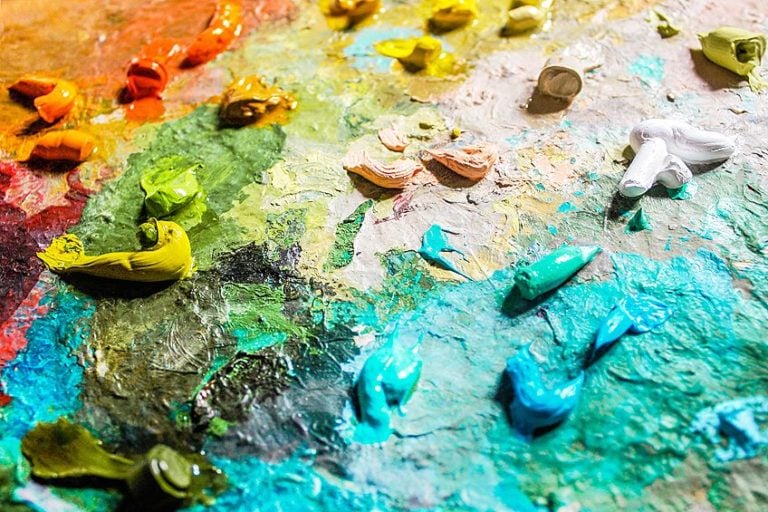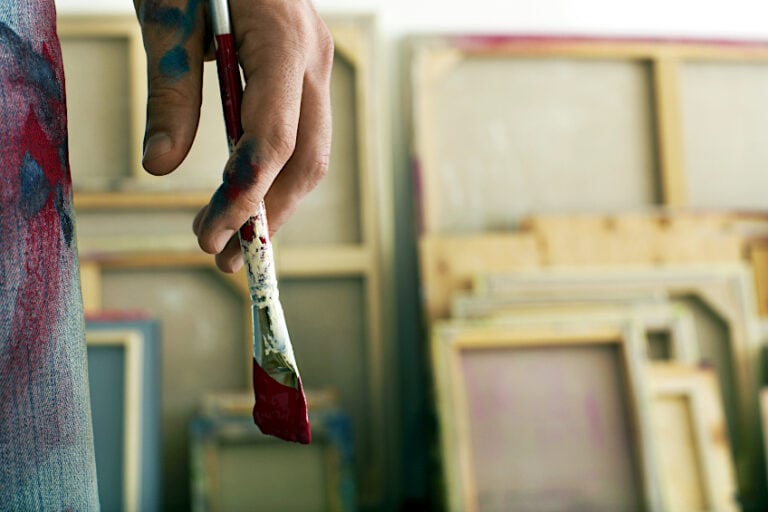What Is a Watercolor Block? – Paper for Painting That Won’t Warp
This post may contain affiliate links. We may earn a small commission from purchases made through them, at no additional cost to you.
Appreciating a watercolor painting is easy. You can sit back and admire the swirls and splashes of colors that make the most beautiful artworks, in so many varying styles. But working with watercolor paints is another story. On the one hand, it is the paint of choice for kids in daycares, but when it comes to using watercolor effectively, creating something impressive requires significant skill. One of the main components in learning how this medium works, is knowing which type of surface to paint on. This tutorial covers the topic of the watercolor block. So, what is a watercolor block, you might ask? Various types of paper suitable for watercolor come in the form of a paper block. We will discuss the various brands and their watercolor paper products in detail, so keep reading if you want to learn more.
Table of Contents
Watercolor Blocks Explained
You might not think it at first, but the surface material is one of the most important factors to consider when you are painting. One usually thinks of the paint, the lighting, and the setting, and possibly the paint brushes. but, having a decent surface to paint on will make the world of a difference. That is where watercolor paper comes into the picture.
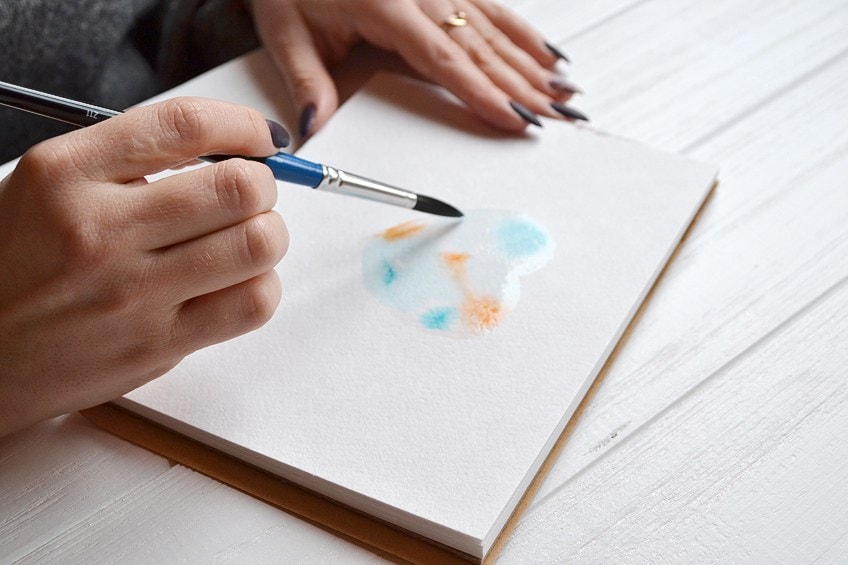
Typically, when you purchase watercolor paper from any store or supplier, it will come in the form of a watercolor block. What is a watercolor block? It is a paper block, with multiple sheets stuck together with a rubber-like substance that coats the paper on each side (all four sides, if you were wondering).
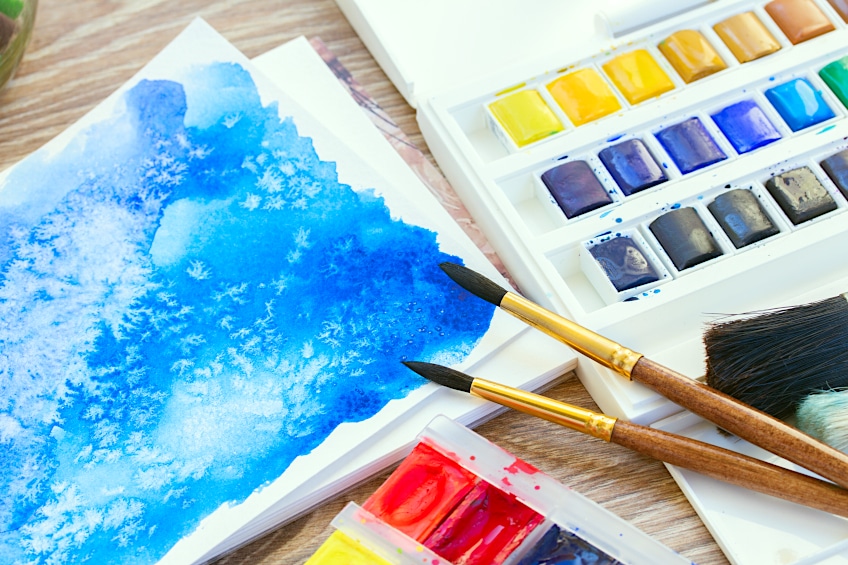
This block of paper for watercolor functions as a perfect surface for watercolor artworks. Each new painting is created on the top sheet of paper, while it is still attached to the block. This is important, because the extensive moisture required for watercolor can cause paper to warp, shrink, and curl. One solution is to stretch the paper, the other is to use a watercolor block, since the adhesion of the page to the block serves as a form of stretching. Once your beautiful masterpiece has dried, you can then tear it off. You will need to loosen the edges with a palette knife, but once loosened, your page should come away clean. The benefit of using a paper block is that no stretching of the paper required, you can paint straight away.
Watercolor Block Advantages and Disadvantages
Now that we have cleared up any confusion as to how to water a paper block for watercolor paper, let’s take a look at how they benefit our artwork and painting experience by comparing some of the blocks, and the disadvantages that go with it as well.
Watercolor Blocks: Advantages
As we have mentioned before, you are now freed of any stretching responsibilities, because a watercolor block has been sealed onto the block, which means that the paper will stay as it is when the drying process happens, and the edges will not curl up, nor will your page shrink. Many professional artists will recommend using a watercolor block because of the lack of buckling, and the ease that it gives your painting process.
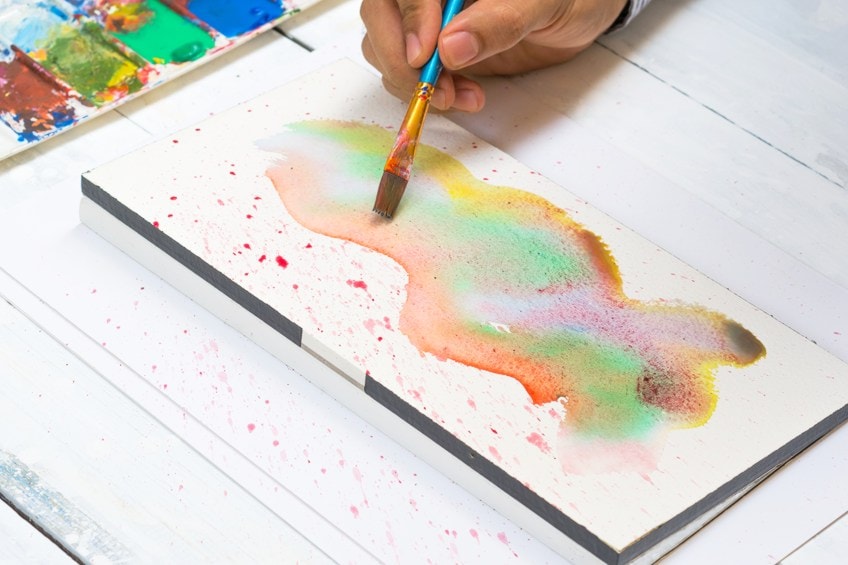
If you did not know about stretching your paper after you have finished painting, it means the process by which you prevent the edges curling inwards, making the paper the opposite of flush. This process usually involves a wooden board that you attach your finished painting to before it has fully dried. You can attach it via a specially designed tape for this purpose, or you can use staples if you do not have any of the tape lying around. So it is safe to say that using a watercolor paper block is beneficial because it cuts out the number of tools and materials needed for a beautiful watercolor artwork that is still a flat piece of paper.
Watercolor Blocks: Disadvantages
The fact that a watercolor block cuts out so much effort in the drying process of your artwork, you would think there are no disadvantages to using a watercolor block, but there it seems, you are wrong. The consensus from many professional watercolor artists is that certain manufacturers do not attach the board at the bottom of the block that holds the sheets of paper together properly and when the board falls away, the binding becomes redundant, and the sheets of paper separate. This is not ideal and puts your art process at a disadvantage because you will now have to manually stretch your paper, so having bought the block was pointless.
The stabilizing board on a watercolor block does make it a little less portable, so you will not be able to take your block out, on-the-go with you because there is a higher chance that the board at the back of the block breaks off.
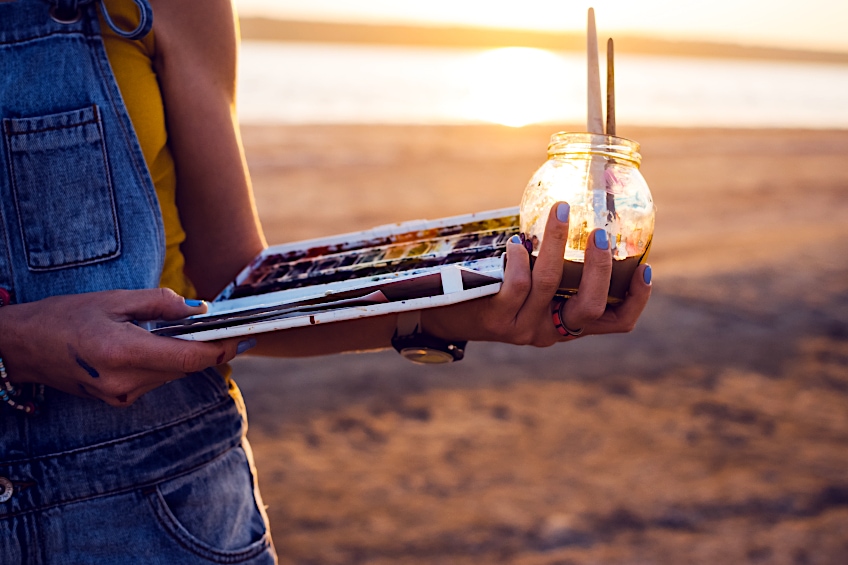
If you are an artist who likes to start a painting, and then take a break from it for a while by starting another, and then returning to the first after a while with a fresh set of eyes and a new take on your subject matter, then you might not appreciate using a watercolor block because you need to wait for your artwork to be fully dry before you can separate it from the block with your palette knife. This means you will need to get yourself two or three watercolor blocks, and that can impact your workspace and resources.
Various Forms of Watercolor Paper
If you are planning on painting with watercolors, you can choose between different types of watercolor paper, depending on what type of painting you want to do. Watercolor paper can be purchased in individual sheets that are bound by a metal or a plastic spiral at the top, and you can separate each sheet when you want to paint by simply tearing it off. Some manufacturers make a little indented groove, or a perforated edge, just below the spiral binding so that you can tear off the sheet with a straight line directly from the spiral.
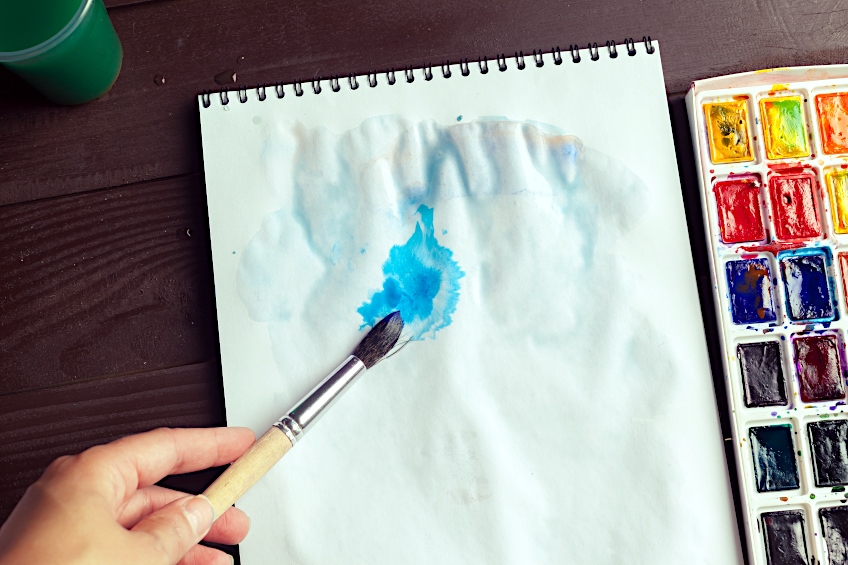
Lifting a Sheet of Paper from Your Watercolor Block
All four sides of a watercolor paper block have been coated with a rubbery substance, which binds all the sheets together and prevents the paper from sliding. In some cases, the manufacturer makes use of a black binding that can be seen quite clearly as it is black, but in other cases, the manufacturer makes use of a transparent binding. The difference in color is not entirely the most important thing, because you will be separating the page from the binding eventually anyway. The only real difference it makes is the black binding will not show dirt.
When you want to take your finished artwork out, after it has dried, of course, you must look for the small open space in the rubbery binding. This slot is about half an inch and it can either be found in the middle of the block at the front, or to the left of the front of the block. Place a palette knife into the open slot and slide it around the edge, the page will separate as you go. The rubbery texture is strong enough to hold all the sheets together beautifully but supple enough for the page to be removed without too much effort. Remember, that working in a rush is never a good thing because you might tear the beautiful creation you just made. When the point of your palette knife is in that open slot, you can maneuver it around the sides of the block, wedging the paper from the rest of the sheets smoothly.
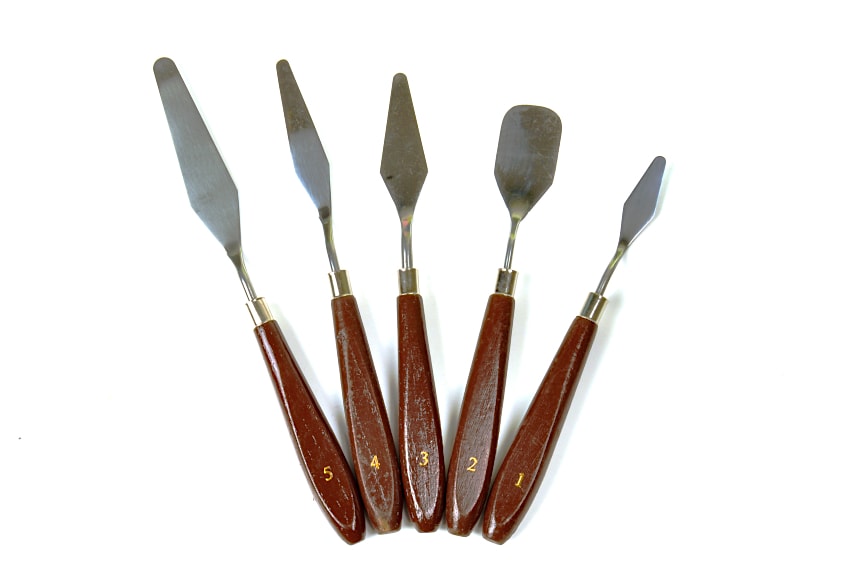
Make sure that you work gently because you do not want to damage, or lift the sheet that lies underneath. Letter openers are also a great tool to use if your palette knife has curiously disappeared, but essentially you need a narrow edge that is not too sharp. A guitar pick or even a bread tag could work as well.
How to Choose the Right Watercolor Block
There are distinctly different grades of watercolor paper ranging from student-level to professional. The vast variety available can be overwhelming. Luckily for you, we have provided brief descriptions out some of the varieties of watercolor paper blocks, so you can make a more informed decision for yourself. Let us take a look at some examples below.
Watercolor Paper Texture
This will all depend on the style of artwork you intend to create, as well as what kind of paper surface texture you want it to have. You are not limited to simply a smooth or rough-textured watercolor paper. There are, in fact, four textures that you can decide between, and we have described them all below.
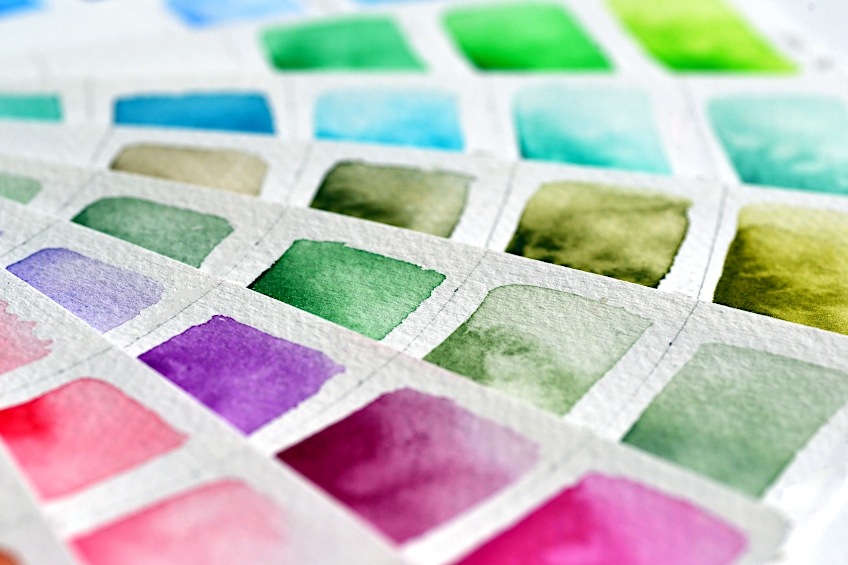
Cold-Pressed Watercolor Paper
With a slightly uneven surface to the touch, this type of textured watercolor is the middle ground of rough surface paper and hot-pressed surface paper. Most professionals will swear by this type of paper because it is versatile for most styles of watercolor painting. This is because the paper is far more absorbent, so the paint will not mess or spill over in the areas you do not wish it to be as easily, giving you more control over your techniques.
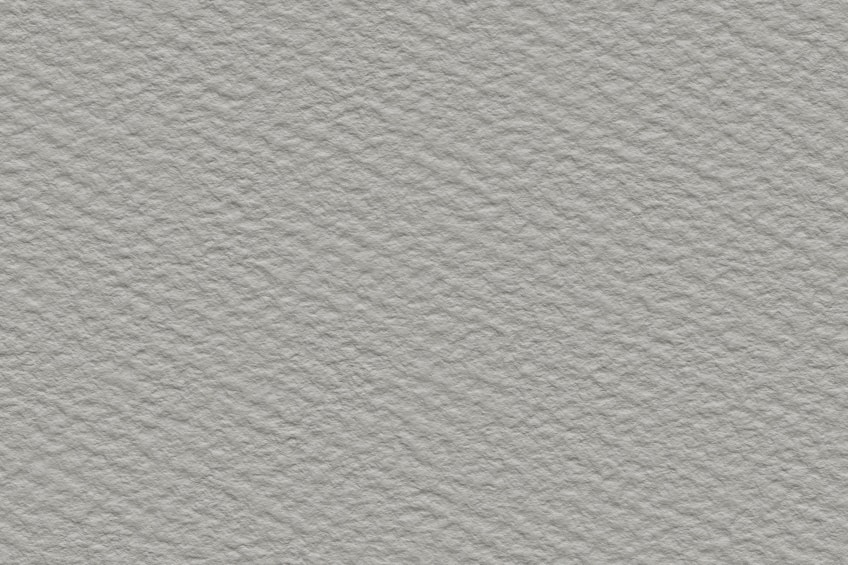
This paper’s texture incorporates raised spots and grooves that help it absorb the paint’s pigment better than hot-pressed paper, but the colors will not be as vibrant. But most will ignore that factor because of the durability that cold-pressed paper promises. Your artwork will survive being transported around before it gets framed a bit better.
Hot-Pressed Watercolor Paper
The texture of the watercolor paper that has been heat-pressed in its manufacturing process will have a sleek and smooth texture. If you consider normal drawing paper or even printing paper, this is very similar to hot-pressed textured paper. It might not be as absorbent as cold-pressed watercolor paper, but the effect on your artwork is silky smooth, and the colors will be brighter and more vibrant.
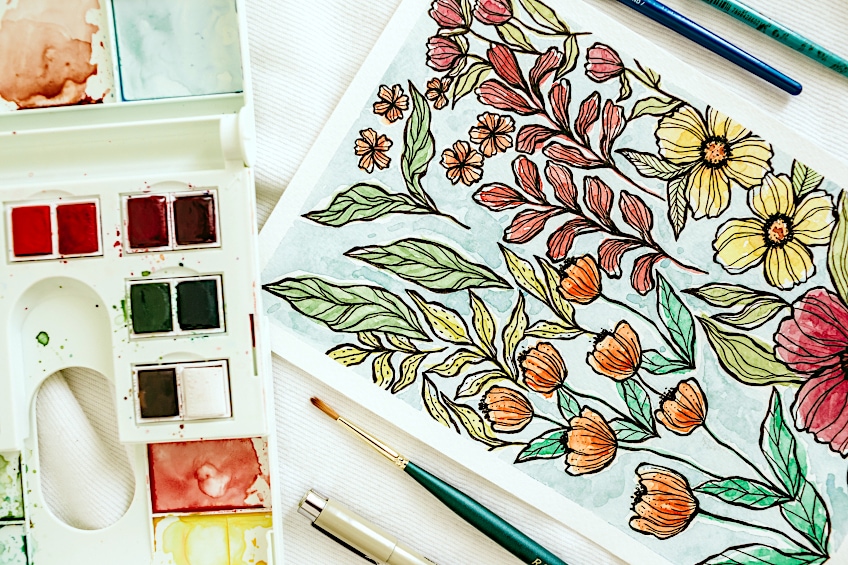
One thing to bear in mind is that this smooth texture is only suitable for single-layer painting styles because the water in the paint will not be absorbed as easily as cold-pressed paper. This might seem like a downside, but you have the added benefit of being able to play around with the paint you have applied to your paper because it will not dry as fast.
When you have fine details that need to be added, we suggest you wait until the majority of your painting has dried before you add them in at the final stage. Ink pens are a great way to make the tiniest little aspects, like the details with eyes, or the finest feathers on a bird.
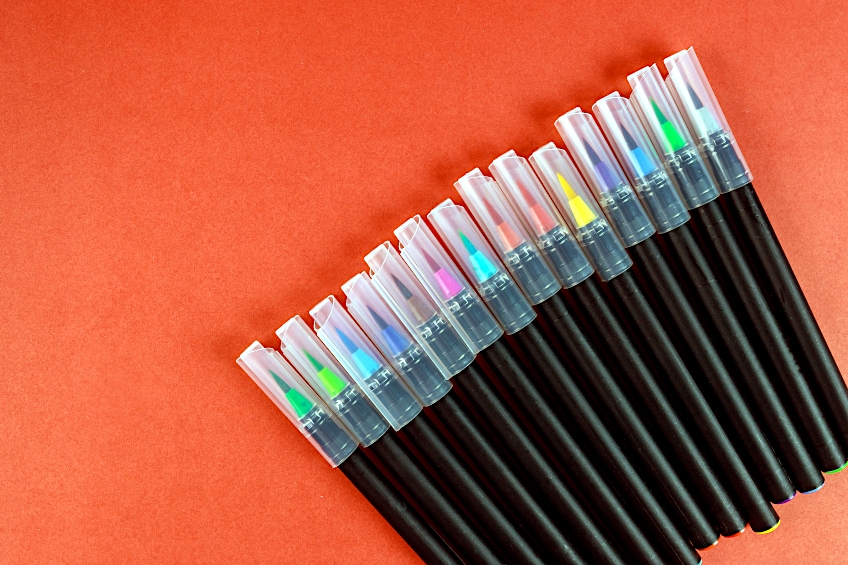
Rough-Textured Watercolor Paper
This is a very specific type of paper, with a texture that is very unique in itself. When you paint your artwork and it has dried properly, you will notice how the texture gives it a slightly speckled or mottled aesthetic.
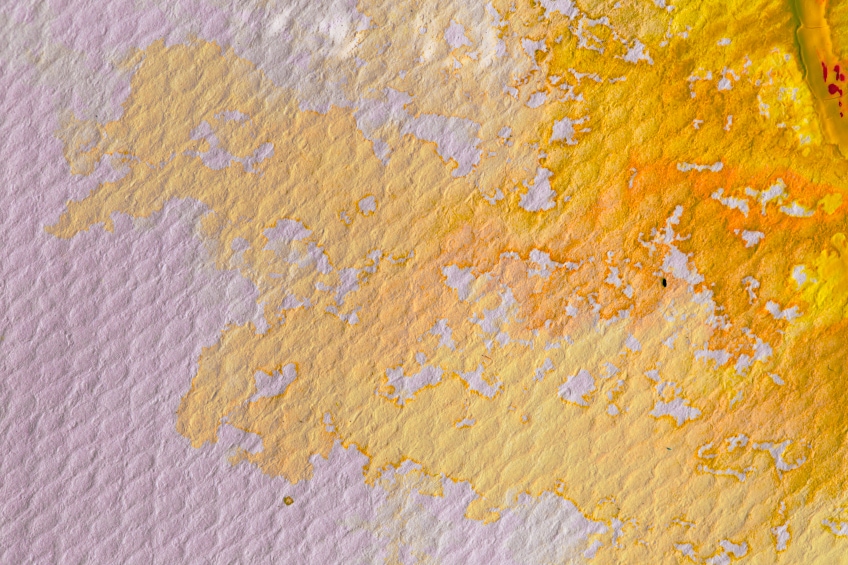
I find it very difficult to control brush strokes when painting on the rough textured paper because the paint seems to settle on the little uneven bumps and sinks into the grooves. This means the paper will require a certain amount of skill to create a masterpiece. This paper is far more textured than cold-pressed paper, which is somewhere in between the hot-pressed and this rough type of paper.
Light- or Heavy-Weight Watercolor Paper
Watercolor paper is categorized into three weight classes, and the weight of the paper defines how thick it is. Paper weights are measured through grams for each meter or pounds for each ream of paper. There are about five-hundred sheets in one ream of paper, which is quite a lot if you consider it. If you think of the normal quantity of paper we use every day, it is usually about twenty-four pounds for one ream, which is about seventy grams for one meter.

Heavyweight is about 300 for one ream, which is about 640 grams for one meter. Medium weight paper is about 140 pounds for one ream, which is about 300 grams for one meter. Lightweight paper is about 90 pounds for one ream, which is about 190 for one meter.
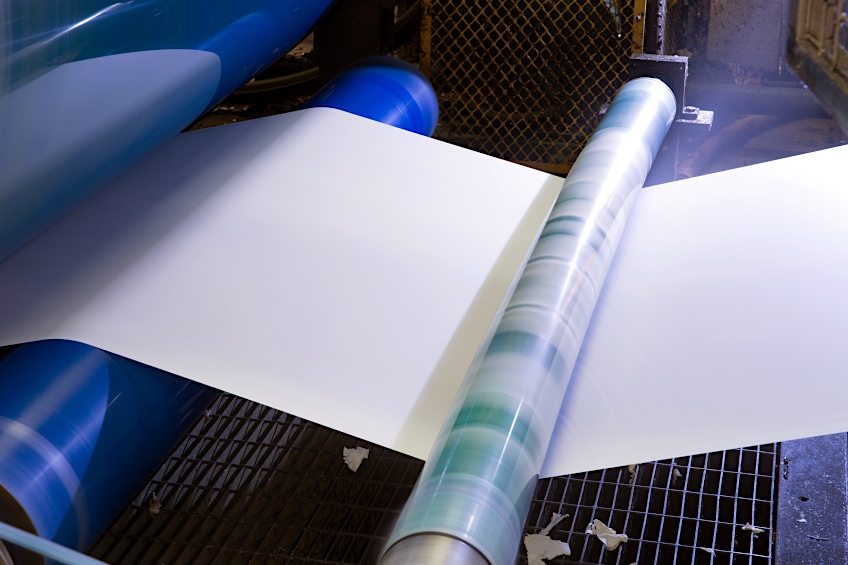
One little know secret is that not all manufacturers design their paper to be the same size, making the measurements differ slightly from the standard guidelines.
Not to worry, however, as watercolor paper is also graded based on the grams for each meter squared, where a meter always remains the same size no matter the size of the paper. Therefore, this form of measurement is the better choice in terms of helping you make the best choice when it comes to choosing the right type of watercolor paper for you.
Choosing the right paper will depend on your preferred style of painting. If you like to paint with a lot of water, making the paint as transparent as possible, then you will need to use heavyweight or thick watercolor paper. If you use a thin page, the paper will be at risk of becoming oversaturated with water. But there is nothing to lose through a little experimentation. Trial and error will help show what is the best watercolor paper you should use for your style of painting.
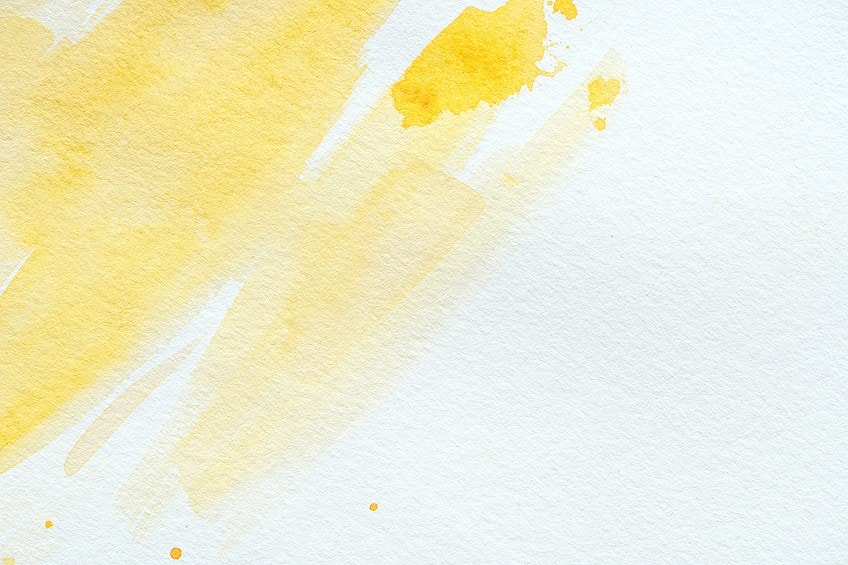
Some people believe that watercolors should be painted on very thick and heavy papers, but the truth is that not only are thicker papers more expensive, but they are also far more absorbent. The watercolor paper does not always absorb like paper towels, however, the quality outweighs thickness or weight. The grading of the paper, professional, or beginner grade, is dependent on a variety of factors, inclusive of how the pulp is made, and the process the paper goes through when manufactured. So the quality of the paper is not entirely dependent on the heaviness and how thick the paper is. This means that if you are satisfied with a paper that is 105 grams per square meter, and you feel that it is suitable for your purpose, leave the heavy paper alone and continue using the paper that you are happy with.
The production process, the way the wood pulp is made, and many other factors determine where each paper type slots into the various grading categories. So, do not rely on the thickness or the weight alone, and rather focus on whether a paper type works with your skill-set. So, this means that you do not have to upgrade to the professional-level paper if you are happy working with the student grade. Art is beautiful regardless of your choice.
Watercolor Paper Types
Let us take a look at some of the other forms that watercolor paper can be purchased. As you can see, you are not limited to using blocks, and you could use one of the following:
Watercolor Paper Pads
This is typically the go-to for all beginners, as it is thought of to be a perfect student-level form of watercolor paper. You can purchase a pad that has been bound with either a spiral or a glue-like substance that you can easily separate the page from. The added benefit is that this paper is not very expensive, so you can practice to your heart’s desire, and the cost is not prohibitive.
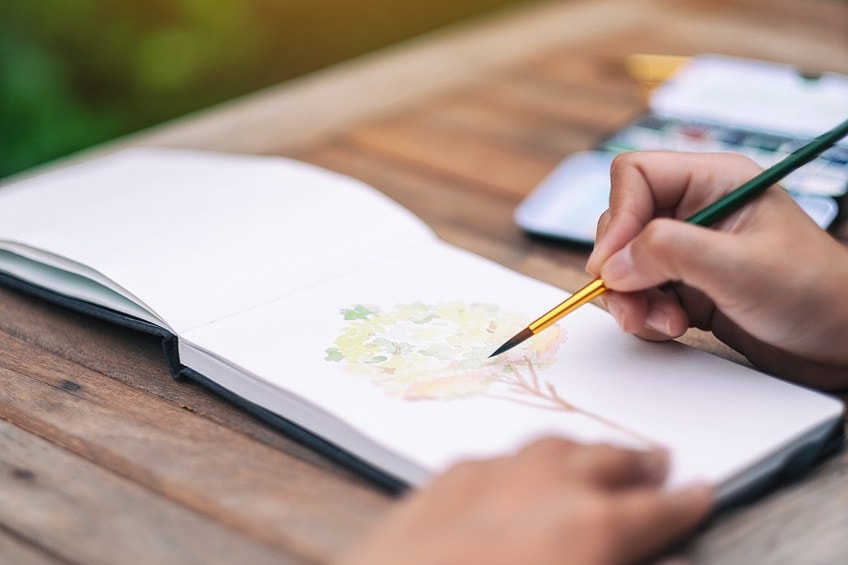
Watercolor Block Paper
If you are looking to step up your watercolor painting game by upgrading the level of paper you are working with, then you should look out for professional-level paper, which typically is found in a watercolor block form. As discussed above, this type of paper consists of multiple sheets joined together with rubbery coating on all sides. The idea is to wait for the artwork to dry fully and then you can peel it away by separating the top paper from the block by running your palette knife all around the edge.
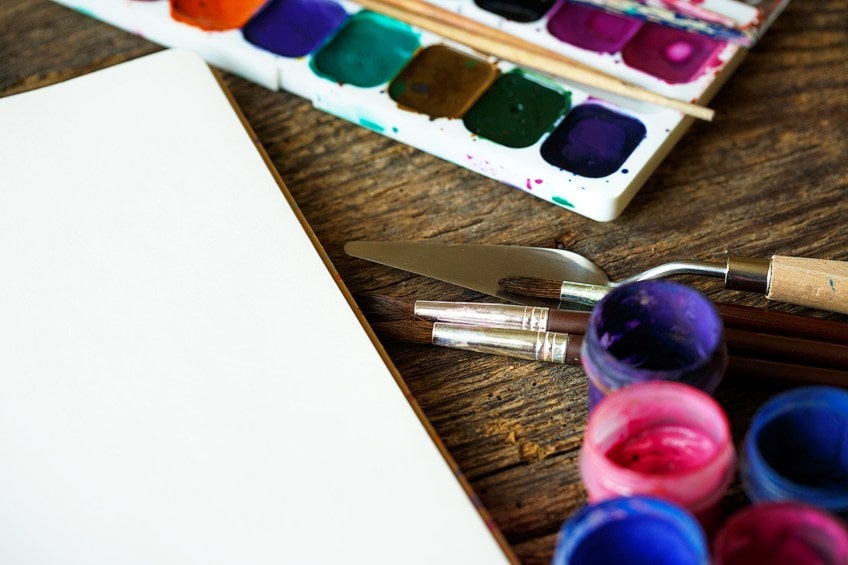
Watercolor Paper Sheets
The more affordable way to work with this form of paper is by buying fewer, or even just one page instead of a whole pad of sheets of paper. It is also ideal because you can cut the sheet to the size or shape you wish your artwork to be.
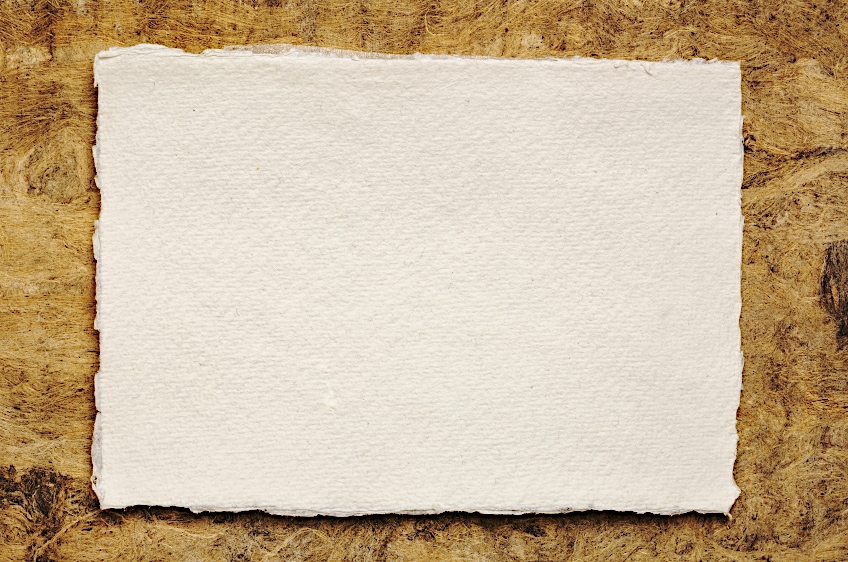
Watercolor Paper sold as individual sheets will always be the top-quality paper that is perfect for professionals because of the absorbency level. There is a type of watercolor paper that has a deckled edge, giving the paper the appearance of a natural tear and that is what many artists are seeking in their paintings. Keep in mind that when sheets are cut to size, the deckled edge is lost.
The Quality of Watercolor Paper
There is an amazing amount of choice that comes with watercolor painting. And with all of the information we have just fed you, it is no wonder if you feel like you are floundering in making your decision. For this, we have made a table where you can see a summarized version of the differences in the paper quality.
| Forms of Paper | Details | Beginner Level | Artist Level |
| Handmade Paper | Identifiable by its four deckled edges and randomly spread out paper fibers, | ✘ | ✔ |
| Paper Made in a Mold | In addition to having two deckled edges and random fiber distribution, it is also not as strong as handmade paper | ✘ | ✔ |
| Machine-Made Paper | Despite the appearance of natural edges, they are, in truth, trimmed, and are made by a paper machine that spreads out all the fibers in the same direction | ✔ | ✘ |
Watercolor Paper for Students
In contrast to 100 percent cotton paper, this type of watercolor paper is made from the pulp of wood and cellulose, which means it does not absorb water as well, so you will find that different results will occur when using it. Typically this paper is made by machines, and it will at some point fade to a yellow tinge because it lacks archival properties.

Watercolor Paper for Professionals
If you have ever heard the term, the cotton rag, then this is what was meant by it. It is made from fibers of one hundred percent cotton fibers which makes it amazingly absorbent. The product is typically made with an attractive grainy texture, is free of chemicals and acids, with a neutral pH level, as well as is archival (which aids the longevity of your artwork).
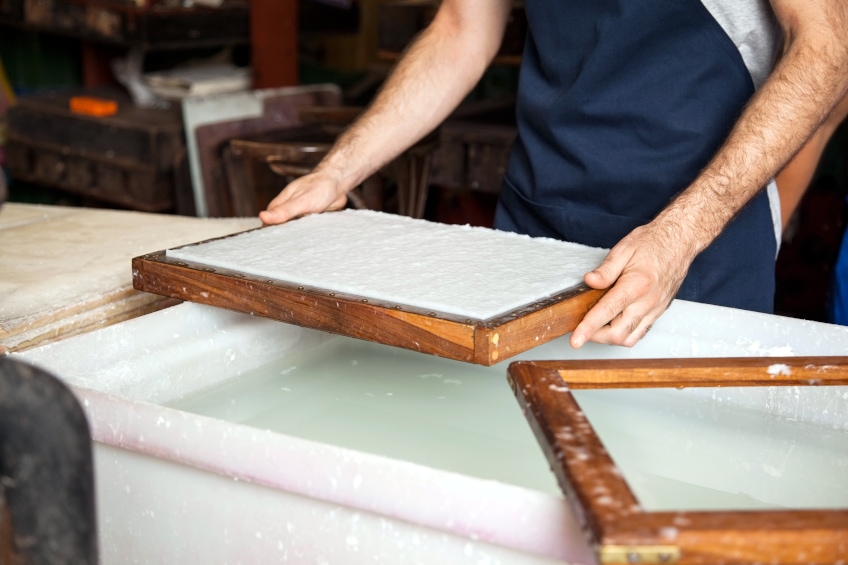
Are Both Sides of Watercolor Paper Usable?
One thing that some manufacturers have mastered is providing you with the option of either rough or smooth textured paper. They do this by making one sheet dual-sided, one side being rough, and the other being smooth. This means that each sheet offers a wide variety of painting techniques that it is suitable for. If you want to save on resources and you prefer to use both sides of the sheet you are painting on, you will need to look for paper specifically designed for this purpose.
So, for a final recap, what is watercolor block paper? It is ultimately a stack of watercolor paper sheets bound together with a coating of a rubbery substance applied on each side of the block. It helps save you the nuisance of having to buy extra tools and materials for the stretching process of your watercolor artwork because you can simply leave it on the block to dry.
Frequently Asked Questions
How Do Watercolor Blocks Work?
Watercolor blocks are made up of a stack of watercolor papers that have been trimmed and piled together. There is a backboard that gives the stack the support it needs, and a rubbery binding applied to all four edges of each page to hold everything together. You paint on the top page, leave it until the artwork has fully dried, and then use a palette knife to separate the page from the block.
Is a Watercolor Block Different From a Watercolor Pad?
Where a watercolor block is set onto a backboard and bound by the rubbery coating on all sides, the sheets of a watercolor pad are only bound together at a single edge, with either a spiral binding or a glue that the paper easily separates from.
How Much Do Watercolor Blocks Cost?
Watercolor blocks are more expensive than your average watercolor pad, and it is mostly due to the extra effort that goes into the manufacturing of this paper type.
How Do I Separate a Page From a Watercolor Block?
Once you have finished your artwork, you must wait for the paint to have dried fully, which will help the page to dry flat and not curl up. You can find the open slot that is somewhere on the edge of the paper block. Slot your palette knife into the space and slide it around the edge of the block, separating the page you were painting on, revealing a fresh page beneath it.
Larissa Meyer is a 32-year-old mother from Michigan and creative spirit since childhood. Her passion for painting and drawing has led her to an education as an illustrator and a career as a freelance graphic designer. She has a Bachelor of Fine Arts in Illustration and a degree in Graphic Design. Larissa is a talented artist who is able to master a wide range of styles and techniques to bring her artistic vision to life. Her greatest passion is currently fluid painting and epoxy resin art. Larissa’s love for art and her knowledge and experience in illustration make her the perfect Creative Director for our fluid-painting.com team. She is the creative head of our team and shares her passion and knowledge with our community through articles and tutorials.
As a mother of a 2-year-old daughter, Larissa also understands the importance of fostering creativity in early childhood. She uses her experience and knowledge to help other parents inspire their children and develop their artistic skills as well.
Learn more about Larissa Meyer and about us.




